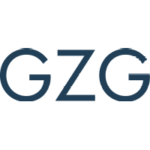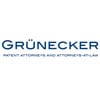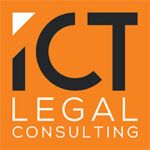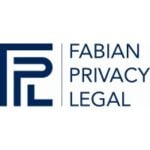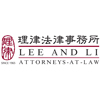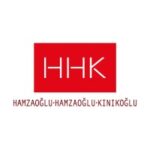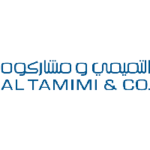-
What are your countries legal definitions of “artificial intelligence”?
Danish law does not provide a general legal definition of “artificial intelligence” (“AI”).
However, a definition is contained in the European Union’s (“EU”) Artificial Intelligence Act (“AI Act”): “‘AI system’ means a machine-based system designed to operate with varying levels of autonomy, that may exhibit adaptiveness after deployment and that, for explicit or implicit objectives, infers, from the input it receives, how to generate outputs such as predictions, content, recommendations, or decisions that can influence physical or virtual environments.”1 2
To support the interpretation and application of this definition, the European Commission published non-binding guidelines on the definition of AI systems in February 2025, which provide further practical guidance for determining whether a software system qualifies as an AI system under the AI Act.3
Though the definition may de facto be generally used in practice, the legal definition of AI may still differ depending on the context; legally the definition used in the AI Act applies only within the context of the AI Act and is not a generally applicable legal definition.
Footnote(s):
1 https://www.europarl.europa.eu/doceo/document/TA-9-2024-0138-FNL-COR01_EN.pdf
2 Article 3(1) of the EU AI Act
-
Has your country developed a national strategy for artificial intelligence? If so, has there been any progress in its implementation? Are there plans for updates or revisions?
The Danish Government has developed a national strategy for AI, published in 2019.4
The strategy sets out the roadmap for how Denmark can be a front-runner in responsible development and use of AI.5
The strategy outlines four objectives for the Danish development and use of AI:
- Denmark should have a common ethical and human-centred basis for AI.
- Danish researchers should research and develop AI.
- Danish businesses should achieve growth through developing and using AI.
- The public sector should use AI to offer world-class public services.
The 2019 strategy contains 24 initiatives that cover the public and private sectors. The strategy allocates DKK 60 million for new initiatives. A number of AI projects are carried out in cooperation with municipalities, regions, and private companies.
Key initiatives include:
- Principles for the responsible development and use of AI
- Common Danish language resource
- More open public-sector data for AI
- Signature projects in the public sector
- Stronger investment in Danish businesses
Update – 2024 Strategic Efforts
In December 2024, the Danish Government introduced a new strategic effort to accelerate the responsible development and deployment of AI in Denmark.6 7 This effort is not a revision of the 2019 strategy but builds upon it through a renewed political and practical push, with a vision centred on ethical use, public benefit, and global competitiveness.
The new effort is structured around three guiding principles:
- AI must always be developed and used with citizens at the centre.
- Danish companies should be globally competitive in AI.
- Denmark should be a global leader in public sector AI adoption.
To operationalize these principles, four new concrete initiatives have been introduced:
- The Digital Taskforce for AI, launched in collaboration with the national associations of municipalities (KL) and regions, will scale AI solutions across the public sector.
- A new Centre for AI in Society will advise authorities and businesses on responsible AI use, helping to bring knowledge into real-world application.
- A platform for secure and transparent Danish language models will be established to support high-quality, Danish-language AI tools.
- Open-source access to Danish text data will be expanded to create a stronger data foundation for Danish-language AI systems.
These measures aim to reinforce Denmark’s ethical AI framework, promote technological sovereignty, and strengthen the position of Danish stakeholders in the evolving European and global AI landscape.
In addition, in February 2024, all political parties in the Danish Parliament agreed on a new national digitalisation strategy for 2024-2027. The strategy includes 29 initiatives, several of which specifically focus on AI.8
Footnote(s):
4 https://en.digst.dk/media/19337/305755_gb_version_final-a.pdf
5 https://en.digst.dk/strategy/the-danish-national-strategy-for-artificial-intelligence/
7 https://www.digmin.dk/Media/638688933086845319/Regeringspublikation,-Kunstig-intelligens_TILG.pdf
-
Has your country implemented rules or guidelines (including voluntary standards and ethical principles) on artificial intelligence? If so, please provide a brief overview of said rules or guidelines. If no rules on artificial intelligence are in force in your jurisdiction, please (i) provide a short overview of the existing laws that potentially could be applied to artificial intelligence and the use of artificial intelligence, (ii) briefly outline the main difficulties in interpreting such existing laws to suit the peculiarities of artificial intelligence, and (iii) summarize any draft laws, or legislative initiatives, on artificial intelligence.
Currently, only voluntary guidelines have been published. There are currently no rules, laws or legally binding guidelines specifically regulating AI in Denmark.
Voluntary guidelines
The Danish Agency for Digital Government has published three voluntary guides on the responsible use of AI in 2024, including guides for companies and authorities and a guide for citizens. 9 10 11
The Danish Agency for Digital Government in cooperation with the Danish Data Protection Agency also launched a regulatory sandbox for AI in March 2024 giving private and government organisations access to relevant expertise and guidance when developing and using AI solutions. Initially, the sandbox will focus on data protection (incl. the GDPR). At a later stage, it will also include guidance on the AI Act. 12
The guidelines highlight that it is the responsibility of the management to ensure that the use of generative AI is done in a responsible manner. Further, the guidelines highlight the risks associated with using generative AI tools, including the risk of bias, data leakage and data breaches.
In addition, the Danish Data Protection Agency issued guidelines in October 2023 on the use of artificial intelligence by public authorities. In the guide, the agency examines artificial intelligence, and the fundamental considerations authorities must address before developing AI solutions, including issues such as the basis for processing, duty of disclosure, and impact assessment. Though directed at the public sector, the principles in these guidelines would also apply partially to the private sector. 13
The Danish Financial Supervisory Authority published a set of recommendations on good practices for the use of AI in the financial sector in May 2024. As part of the authority’s 2025 strategy, which aims to support the prudent use of technology and new business models, the purpose of the recommendations is to make financial institutions aware of areas where the use of AI may lead to an increased need for risk-mitigating actions.
Furthermore, KL (Local Government Denmark) has published a guide for municipalities. The guide aims to help municipalities use AI responsibly and wisely. 14
Moreover, the Danish guidance on AI literacy applies to all companies and public authorities in Denmark that develop or deploy AI systems, in accordance with Article 4 of the AI Act, which took effect on February 2, 2025. 15
Existing laws
Where applicable, AI will naturally be subject to Danish law, meaning that in many cases it must be interpreted and used in accordance with Danish legal principles and enacted legislation.
The existing laws that could be applied to AI are primarily the Danish Copyright Act, the Danish Data Protection Law, and the Danish Marketing Practices Act.
AI analyses and reproduces patterns based on data. It has been debated whether this data use involves copyright infringement, as training data often involves copyrighted material. The Danish Parliament has addressed a part of these input issues by adopting an amendment to the Danish Copyright Act on June 1, 2023, which – based on the Directive on Copyright in the Digital Single Market – implemented new provisions in sections 11 b and 11 c of the Danish Copyright Act on so-called text and data mining. The effect hereof was that authors of works cannot object to their works being exploited for so-called text and data mining unless the rights holders have specifically opted out of commercial text and data mining. Violations of the Danish Copyright Act can lead to fines.
Another existing regulation that could be applied to AI is the GDPR, supported by the Danish Data Protection Law. AI systems process significant personal data, necessitating compliance with GDPR’s principles like lawfulness, fairness, transparency, data minimization, and purpose limitation. It also ensures individuals’ rights (e.g. access, rectification, erasure) are respected. Non-compliance with the GDPR can lead to significant fines.
In addition, the Danish Marketing Practices Act is another key regulation that could be applied to AI. This act governs the use of marketing, ensuring fair and non-deceptive commercial practices. AI-driven advertising and consumer data processing must comply with the act’s principles to protect consumers. Violations can result in fines and enforcement actions by the Danish Consumer Ombudsman.
Also, according to the Danish Financial Statements Act, companies must declare their data ethics policy in their annual accounts, cf. section 99 d.
The EU AI Act
Regulation of AI is primarily focused on European level to ensure a unified approach and harmonize legislation across borders in the EU. The AI Act establishes rules and standards for AI systems in specific sectors. It addresses concerns related to fundamental rights and protection of individuals from discriminatory or harmful AI practices. 16
The AI Act entered into force across all 27 EU member states on 1 August 2024. It will enter into force in stages with implementation from mid-2024 to mid-2027.
On February 2 2025, the first elements of the regulation came into force, including the prohibition of systems with an “unacceptable risk” (Chapter II) and the requirement for employee training (“AI literacy”).
The requirements for General Purpose AI (GPAI) models and provisions regarding supervisory authorities will take effect on August 2 2025. Furthermore, on August 2, 2026, the widely discussed requirements for high-risk systems, along with the remainder of the AI Regulation, will come into force.
Finally, by August 2 2027, the requirements will also apply to AI systems classified as high-risk due to their inclusion in specific EU harmonization legislation, particularly product safety regulations.
On 4 February 2025, the European Commission published draft Guidelines on prohibited AI practices under the AI Act. These non-binding guidelines aim to support the consistent application of the AI Act by clarifying which AI uses, such as manipulative techniques, social scoring and real-time biometric surveillance, are considered unacceptable due to their risks to fundamental rights and European values. 17
The proposed AI Liability Directive (AILD), published by the European Commission in 2022, aimed to harmonize certain aspects of non-contractual civil liability for damage caused by AI systems. It sought to introduce measures such as disclosure obligations and rebuttable presumptions to ease the burden of proof for claimants in AI-related cases. However, despite initial momentum, the Commission announced in its 2025 Work Programme that the proposal will be withdrawn due to lack of consensus on core issues among the EU institutions. 18
National enforcement of the AI Act
The AI Act requires Member States to adopt supplementary national legislation to designate competent authorities responsible for supervision under the regulation. In addition, Member States must establish national enforcement measures and sanctions for non-compliance.
Denmark has now fulfilled this obligation by adopting a supplementary law that enters into force on 2 August 2025.19 The law ensures that Denmark has the necessary framework to enforce the AI Act and designates three competent authorities. Refer to section 18 for more about these competent authorities.
These authorities are authorised to request technical information, conduct on-site inspections without a court order, perform technical examinations, issue compliance orders and temporary bans, and publish decisions.
Violations are subject to fines, and criminal liability can be imposed on both individuals and legal entities.
Footnote(s):
11 https://digst.dk/digital-transformation/guide-til-brug-af-kunstig-intelligens/
14 https://videncenter.kl.dk/media/h4anfadj/guide-om-generativ-ai-til-kommunerne.pdf
16 https://www.europarl.europa.eu/doceo/document/TA-9-2024-0138-FNL-COR01_EN.pdf
19 https://www.ft.dk/ripdf/samling/20241/lovforslag/l154/20241_l154_som_vedtaget.pdf
-
Which rules apply to defective artificial intelligence systems, i.e. artificial intelligence systems that do not provide the safety that the public at large is entitled to expect?
No specific rules in Denmark apply directly to defective AI systems. However, a defective product containing an AI system can be subject to the Danish Product Liability Act, as well as the separate set of product liability rules developed through Danish case law. In most cases, the two sets of rules overlap. The Danish Product Liability Act implements the EU Product Liability Directive 85/374/EEC.
However, in the future, the Danish Product Liability Act will be updated to cover AI systems as well. This will be the result of the implementation of the revised product liability directive (Directive on liability for defective products and repealing Council Directive 85/374/EEC), which includes AI systems as products. Denmark has two years to implement the revised product liability directive from 10 October 2024.
Also, the EU General Product Safety Regulation, effective 13 December 2024, significantly enhances the legal framework for AI in Denmark, particularly for AI-powered consumer products.
The Danish Product Liability Act and the Product Liability Directive
Currently, the Danish Product Liability Act implementing the EU Product Liability Directive 85/374/EEC only applies to products. AI systems (software) are not expressly covered by the law. AI systems will however likely be indirectly covered when incorporated into a product; if the product is defective, the product is covered regardless of whether the defect was caused by the AI system.
Therefore, the product liability rules as they stand today are not well suited to software (or AI) as the rules are designed for physical products. To address this, a revision of the Product Liability Directive has been adopted by the EU on 10 October 2024, which will include AI systems as “products” within the directive’s scope. The Product Liability Directive proposal takes digital products into account to a much greater extent. The directive will directly cover AI and data damage will also be addressed in the new rules. This revision will have effect once Denmark updates the Danish Product Liability Act to reflect the revised directive. An update has however not yet been proposed.
The General Product Safety Regulation
The General Product Safety Regulation (“GPSR”), effective from 13 December 2024, directly impacts the legal framework for AI in Denmark, bringing specific implications for AI-powered consumer products as part of the EU’s “AI Package.” The GPSR replaces the 2001 General Product Safety Directive.
This new regulation addresses the risks posed by AI technology embedded in consumer products like smart home devices. By introducing AI-specific requirements, the GPSR builds on the AI Act’s focus, establishing both general and AI-specific safety measures. Economic operators must now assess risks related to AI, such as cybersecurity and product interconnectivity, and ensure that product safety standards are continuously met.
The GPSR also clarifies accountability within supply chains, requiring parties who substantially modify AI-based products to assume the responsibilities of a manufacturer. As a result, the GPSR creates a more comprehensive safety landscape for AI integration, challenging operators to align product conformity and safety obligations across sectors.
-
Please describe any civil and criminal liability rules that may apply in case of damages caused by artificial intelligence systems. Have there been any court decisions or legislative developments clarifying liability frameworks applied to artificial intelligence?
Civil liability
The general rules and principles of Danish law of torts apply; no specific rules apply directly to AI. Currently, the courts in Denmark have not issued any judicial decisions clarifying liability frameworks applied to AI.
A natural or legal person may thus incur liability if they are responsible for having caused damages to any natural or legal person, including if AI was involved. The principles are the same as for damages caused without the use of AI.
Specific laws provide specific liability rules in addition to the general rules and principles. In practice, the following are of relevance when using AI:
In cases involving privacy issues, such as a personal data breach, the General Data Protection Regulation (GDPR) and the respective Danish Data Protection Law can be invoked giving a right for data subjects to seek compensation for damages.
If damage is caused to a natural person, the Danish Product Liability Act and the Danish Liability in Damages Act may be applicable if the AI system is part of a product. Refer to section 4 for more on product liability.
For intellectual property infringements, the Danish Copyright Act, the Danish Marketing Practices Act, the Danish Trademark Act, and the Danish Patents Act, among others, may be relevant.
Criminal liability
The general rules and principles of Danish criminal law apply; no specific rules apply directly to AI. Under several of the above laws, there is a legal basis for imposing criminal sanctions in the form of fines.
-
Who is responsible for any harm caused by an AI system? And how is the liability allocated between the developer, the deployer, the user and the victim?
There are no special rules on liability that apply specifically to AI. Refer to section 5 for the various relevant liability regimes.
Liability will be based on who was responsible pursuant to the general rules, and principles of Danish law of torts and damages. Therefore, the person responsible for the damage is determined based on who is responsible for the fault that caused the harm.
If the rules on product liability apply, the manufacturer must compensate for damage caused by a defect in a product produced or supplied by it, cf. section 6(1) of the Danish Product Liability Act. An intermediary must compensate for product damage unless the intermediary can prove that the damage is not due to their fault or negligence, cf. section 10(1) of the Danish Product Liability Act. If two or more persons are liable under this Act for the same damage, they are jointly and severally liable, cf. section 11(1) of the Danish Product Liability Act.
-
What burden of proof will have to be satisfied for the victim of the damage to obtain compensation?
The burden of proof usually rests on the injured party in most scenarios, regardless of AI being involved.
In terms of product liability, the injured party must prove the damage, the defect and the causal link between the defect and the damage, cf. section 6(2) of the Danish Product Liability Act.
-
Is the use of artificial intelligence insured and/or insurable in your jurisdiction?
Currently, there is no generally available insurance coverage designed specifically for the use of AI in Denmark. However, it is possible that AI in some cases can be covered under, for instance, a product liability insurance, to the extent the definition of product liability is satisfied. It is expected that these types of insurance coverages will emerge in the future.
-
Can artificial intelligence be named an inventor in a patent application filed in your jurisdiction?
AI cannot likely be named as an inventor in a patent application, but as the Danish courts have not yet ruled hereon no Danish case law exists yet.
However, it is generally recognised that at least one natural person must always be named as the inventor. This is consistent with EU practice. In December 2021 the Legal Board of Appeal of the European Patent Office ruled in the combined cases J 8/20 and J 9/20 that AI cannot be named as the inventor on patent applications. 20
Footnote(s):
-
Do images generated by and/or with artificial intelligence benefit from copyright protection in your jurisdiction? If so, who is the authorship attributed to?
It is unlikely that images generated by AI can benefit from copyright protection. Generally, only original creations by natural persons can be copyright-protected. However, the Danish courts have not yet ruled hereon.
The originality requirement means that the work must be attributable to one or more persons who have made creative choices. According to the CJEU (C-683/17-Cofemel), a copyright-protected work requires an “intellectual creation reflecting the freedom of choice and personality of its author”.
Works created using computer technology can be protected if the author has made creative choices, and the technology has only been used as an auxiliary tool. However, it is being debated how much of the creative process can be left to computers, including in relation to works generated using AI. It is also being debated whether any such copyright belongs to the AI developer or the user of the program.
-
What are the main issues to consider when using artificial intelligence systems in the workplace? Have any new regulations been introduced regarding AI-driven hiring, performance assessment, or employee monitoring?
When using AI systems in the workplace, there are several legal issues to consider. Key considerations include confidentiality, data protection, copyright, and compliance with evolving regulation:
- Proper use: Employees must be sure to comply with all applicable laws, guidelines, and the AI system’s terms of use. Furthermore, the employee must be critical of the information that comes from AI. AI information is created based on human-generated data and may therefore produce results that are biased or false.
- Confidential information: In addition, employees must be careful not to use confidential information in AI, including trade secrets. All public AI tools should generally be considered as non-confidential systems, which is why there are potentially major consequences and risks associated with sharing confidential information with them.
- Data protection: It is important to implement strict data security protocols and comply with applicable data protection legislation, such as GDPR. Particular attention should be paid to legal bases for processing and the requirement for data protection impact assessments (DPIAs).
- Copyright: Furthermore, employees must respect copyright and other intellectual property rights when using AI. Employees must not use any copyrighted material in an AI tool without the permission of the copyright holder. Also, employees must be aware that AI may be built on copyrighted works without permission from the rights holders.
- Employment law and discrimination: Employers must ensure that AI use complies with Danish employment law and collective agreements, which play a central role in Denmark. This is particularly relevant in recruitment, where tools like automated CV screening must not discriminate, in line with the Danish Employment Non-discrimination Act.
- Compliance with the AI Act: The AI Act applies to any company developing, deploying, or using AI, meaning it does not apply uniquely to technology companies. Companies should therefore begin reviewing and adapting their practices to ensure compliance with both current and upcoming obligations under the AI Act.
Currently, there are no specific rules in Denmark regarding AI in the workplace. However, there are several voluntary guidelines issued by the Danish authorities. Refer to section 3 for more about these guidelines. These voluntary guidelines recommend that Danish companies decide which AI tools should be used in the workplace. Also, the company should prepare some guidelines for the use of AI by employees.
-
What privacy issues arise from the development (including training) and use of artificial intelligence?
The use of AI systems raises several privacy issues that stem from how data is collected, stored, processed, and shared.
- Data breaches and leakages: The primary privacy issues surrounding AI involve the potential for data breaches, data leakages and unauthorized access to personal data, given that AI systems require vast amounts of data to train and operate effectively.
- Data principles: Also, the GDPR sets clear guidelines for the processing of personal data to ensure privacy and data protection. The principles of data quality and data minimization ensure that only necessary and correct information is used. On the other hand, the AI must have enough quantity and quality of data to provide accurate results. This poses a challenge and raises privacy issues. At the same time, insufficient or irrelevant data can lead to erroneous results that can potentially violate citizens’ rights and privacy.
- The use of data in public AI: The use of confidential data in public AI may entail a risk of leakage and breach of NDA/confidentiality undertaking. In addition, the use of copyrighted data in AI may imply copying to third parties and a breach of the license/exclusive rights. Furthermore, the use of personal data would be a transfer to a new data controller and result in processing without a legal basis. Therefore, it is recommended to only use publicly available data in public AI.
- Cloud security: Storing AI-related data in the cloud raises concerns about data protection, access control, and compliance with GDPR.
- Cross-border data transfers: Many AI systems rely on cloud-based infrastructures, which may involve cross-border data transfers out of the EU. This raises concerns about data sovereignty and compliance with data protection regulations, particularly in jurisdictions with strict data privacy laws like the EU.
-
How is data scraping regulated in your jurisdiction from an IP, privacy and competition point of view? Are there any recent precedents addressing the legality of data scraping for AI training?
There are currently no known Danish or EU precedents that specifically address the legality of data scraping for the purpose of AI training. However, the regulatory landscape is shaped by a combination of copyright, privacy, and competition law considerations.
IP
Data scraping can be legal in Denmark. However, the legality depends on how the scraping is performed. Scraping or publishing copyrighted material, including news articles, is not allowed if the material can only be accessed through a subscription or is otherwise dependent on a customer relationship.
The Copyright Directive (Directive (EU) 2019/790) stipulates, among other things, that press services that publish news articles should receive a share of the revenue generated from so-called news aggregators, i.e. services that use web scraping. Conversely, it also states that use without an economic purpose is legal, as is linking to news articles and extracting single words or short excerpts.
In general, the copying of training data, when it consists of works, is covered by the exclusive right to make copies, cf. section 2(1) of the Danish Copyright Act. Therefore, it requires permission from the rights holders to the extent that it involves copying the works in their original form and in their entirety.
The Danish Parliament has addressed this by adopting an amendment to the Danish Copyright Act on June 1, 2023, which – based on the Directive on Copyright in the Digital Single Market – implemented new provisions in sections 11 b and 11 c of the Danish Copyright Act on so-called text and data mining. Therefore, it has become possible in Europe to harvest data from websites etc. for text and data mining purposes, where the author or website owner has not actively opposed this (opted out), for example in metadata or in the terms and conditions of the website.
Similarly, the EU AI Act, Recital 105 states that the text and data mining rules of the DSM Directive include data harvesting for the development of AI solutions.
Privacy
Under the GDPR, web scraping involving personal data may be prohibited. The presence of personal data within scraped information necessitates compliance with GDPR. Data scraping entities must justify their data processing on grounds such as consent or legitimate interest. Moreover, transparency with individuals about the usage of their data is paramount, alongside adhering to principles of data minimization and respecting individuals’ rights over their data. According to the recently released guidelines from the Dutch Data Protection Authority, private individuals and private parties are in most cases, not authorised to engage in scraping. 21
Competition Law
Data scraping might intersect with competition law, particularly when it seeks to undercut competitors unfairly or harvests proprietary information.
Footnote(s):
21 Dutch Data Protection Authority (AP): Guidelines – scraping by private organizations and individuals.
-
To what extent is the prohibition of data scraping in the terms of use of a website enforceable?
Currently, it is unclear how the new provisions in the Danish Copyright Act (sections 11 b and 11 c regarding text and data mining) are enforced and used in practice. This is because it is difficult to prove that data scraping has taken place.
In the case of unauthorized data scraping, the affected party can get a (preliminary) injunction against the scraping of information that originated from their database. Furthermore, the evidence protection rules in Chapter 57a of the Danish Administration of Justice Act allow rights holders to get the bailiff’s help to secure evidence of potential infringements. In addition, compensation can be claimed, cf. section 83 of the Danish Copyright Act.
In addition, there are examples of cases where a party has successfully invoked the database rules in section 71 of the Danish Copyright Act in support of preventing another company from “harvesting” data from the plaintiff’s website. 22
If the nature and extent of the copied data exploits the investment and market position that a certain company has achieved, this may be in violation of Section 3 of the Danish Marketing Practices Act. 23
Footnote(s):
22 U.2003.1063.SH
23 U.2021.3408.SH
-
Have the privacy authorities of your jurisdiction issued guidelines on artificial intelligence?
Yes, the Danish Data Protection Agency and the Danish Agency for Digital Government have issued voluntary guidelines on AI. Refer to section 3 for the content of these guidelines.
-
Have the privacy authorities of your jurisdiction discussed cases involving artificial intelligence? If yes, what are the key takeaways from these cases?
The Danish privacy authorities have discussed several cases involving AI.
In one case, the Danish Data Protection Agency has ruled that the Danish authorities have a legal basis in the Danish Public Records Act to use AI solutions to respond to requests for access to documents. In addition, it was determined that the processing of personal data with an AI solution did not have direct consequences for citizens, as it was a matter of developing a solution. 24
In addition, in another case, the Danish Data Protection Agency concluded that the development, operation and re-training of an AI solution where personal data is processed in order to predict citizens’ need for rehabilitation to avoid functional impairment can generally be based on Article 6(1)(e) and Article 9(2)(g) of the GDPR. 25
However, the Danish Data Protection Agency has also found that an AI system does not in itself constitute personal data but is only the result of the processing of personal data. Furthermore, it is the Danish Data Protection Agency’s assessment that a data protection impact assessment (DPIA) should be prepared when developing and using AI solutions. 26
The result of the current practice by the Danish Data Protection Agency is that the use of AI with personal data is somewhat complicated. It may essentially be possible to train a solution on personal data – but not use it afterwards for the purpose for which it was trained. The practice is expected to develop further.
Footnote(s):
24 Case 2023-212-0021 (Danish Data Protection Agency)
25 Case 2023-212-0015 (Ibid.)
-
Have your national courts already managed cases involving artificial intelligence? If yes, what are the key takeaways from these cases?
No, the Danish courts have not yet ruled on cases involving AI.
-
Does your country have a regulator or authority responsible for supervising the use and development of artificial intelligence?
Yes. In accordance with the AI Act, Denmark has adopted supplementary legislation that enters into force on 2 August 2025. This law designates three competent authorities with distinct supervisory responsibilities. 27
The Danish Agency for Digital Government is appointed as the central coordinating and authorising authority. It serves as the primary contact point for the European Commission and other Member States, including the European AI Office. It also supervises the majority of prohibited AI practices under the AI Act and may conduct inspections, collect information, issue compliance orders, and impose temporary prohibitions.
In addition, the Danish Data Protection Agency remains responsible for oversight of AI practices involving biometric categorisation and personal data, especially in connection with prohibited uses under the AI Act. It also continues its broader supervisory role over the GDPR-compliant use of AI in both public and private sectors.
Finally, the Danish Court Administration oversees the use of AI by the judiciary when courts act outside their judicial capacity. In cases where AI is used within judicial proceedings, the matter is handled by the relevant courts themselves.
Together, these authorities ensure the national enforcement of the AI Act, including through inspections, investigations, sanctions, and publication of decisions. Refer to section 3 for more about the national enforcement of the AI Act.
In addition, the European AI Office, established in February 2024 within the Commission, oversees the AI Act’s enforcement and implementation with the member states.
Footnote(s):
27 https://www.ft.dk/ripdf/samling/20241/lovforslag/l154/20241_l154_som_vedtaget.pdf
-
How would you define the use of artificial intelligence by businesses in your jurisdiction? Is it widespread or limited? Which sectors have seen the most rapid adoption of AI technologies?
Danish companies generally see AI as a crucial parameter for maintaining competitiveness, and AI is widely adopted across various industries in Denmark.
Between 2023 and 2024, the number of companies with more than 10 employees using AI nearly doubled, rising from 15% to 28%. AI adoption is highest among large companies, with 63% of companies with over 250 employees using AI, compared to only 25% among companies with 10–49 employees. In general, adoption is expected to increase further in the coming years. 28
However, it’s clear that there are differences in usage depending on the industry. AI is used in a significant share of companies in the information and communication industry, while usage remains very limited in the construction sector. 29
Footnote(s):
28 https://www.dst.dk/da/Statistik/nyheder-analyser-publ/nyt/NytHtml?cid=55352
29 ibid.
-
Is artificial intelligence being used in the legal sector, by lawyers and/or in-house counsels? If so, how? Are AI-driven legal tools widely adopted, and what are the main regulatory concerns surrounding them?
AI is becoming more and more prevalent in the legal sector, and several law firms use AI for many functions. 30
In fact, the majority of larger Danish law firms now incorporate AI tools into their daily practice, reflecting a broader industry trend toward digital transformation. At the same time, the number of Danish legal tech companies is steadily increasing, offering specialized AI solutions tailored to the legal profession.
- AI expedites and streamlines legal work by effectively analysing extensive data, reducing time and costs associated with legal cases.
- AI also automates routine tasks, such as form completion, translation, summaries, and data extraction, freeing up time for more complex matters and minimizing the risk of human error.
- AI also assists with information retrieval, helping legal professionals find relevant case law, legislation, and legal commentary more efficiently.
Footnote(s):
-
What are the 5 key challenges and the 5 key opportunities raised by artificial intelligence for lawyers in your jurisdiction?
Key challenges 31:
- GDPR: The GDPR’s clear guidelines on data processing, emphasizing data quality and minimization, challenge AI development by restricting the quantity and quality of data needed for accurate results. Also, the primary privacy issues surrounding AI involve the potential for data breaches, data leakages and unauthorized access to personal data, given that AI systems require vast amounts of data to train and operate effectively.
- Copyright: A key IP challenge is whether training AI systems requires permission from rights holders. AI systems are typically trained on extensive datasets, often including copyrighted material used without prior permission. The central question is if such training needs approval. The focus is on whether the text and data mining regulations apply and if their conditions are satisfied. Also, a key challenge is determining if and when using AI systems requires permission. Another question is whether AI-generated outputs can be protected by copyright, and what the implications are if they cannot be.
- Security and data integrity: AI enhances efficiency but risks disclosing trade secrets or personal data, requiring careful management and balancing. AI’s reliance on personal data necessitates strict security measures and compliance with regulations, and its effectiveness depends on high-quality, unbiased data.
- Legal judgements: While AI can analyse large amounts of data and identify patterns, it can be difficult to train the systems to handle situations that require judgment and assessment by applying legal knowledge and principles.
- Opt-out on EU justice and home affairs: Depending on the Danish Parliament, the courts may have a looser system for AI, while Danish arbitration – which as a starting point does not fall under the opt-out on EU justice and home affairs – must comply with the requirements of the EU AI Regulation. In addition, it is still uncertain how the government and the Danish Parliament will choose to address the EU AI Regulation under the opt-out.
Key opportunities:
- Efficiency: AI can help improve the efficiency and quality of legal services and provide better outcomes for clients while reducing the time involved in legal processes.
- Enhanced research: AI systems can perform comprehensive legal research and predict case outcomes based on past data which addresses the ever-increasing complexity of the law.
- Routine tasks: AI can automate routine tasks freeing up time for more complex matters and minimising the risk of human error.
- Reduced human errors: Automating data analysis and routine tasks reduces the risk of human error, increasing the accuracy and reliability of legal work.
- Cost reduction: AI reduces operational costs for law firms by streamlining processes and automating repetitive tasks, which cuts down on the time and resources needed to complete them manually.
Footnote(s):
-
Where do you see the most significant legal developments in artificial intelligence in your jurisdiction in the next 12 months? Are there any ongoing initiatives that could reshape AI governance?
The most significant legal developments in AI in Denmark over the next 12 months will most likely be as a result of the EU AI Act.
The AI Act entered into force across all 27 EU Member States on August 1, 2024, with a phased implementation. As of February 2, 2025, the regulations on prohibited AI systems are in effect. The obligations concerning General Purpose AI (GPAI) models will apply from August 2025, followed by the majority of the remaining provisions, including those on high-risk AI systems, from August 2026. Finally, by August 2027, additional requirements will apply to certain high-risk AI systems covered by EU harmonization legislation, particularly product safety rules.
Denmark: Artificial Intelligence
This country-specific Q&A provides an overview of Artificial Intelligence laws and regulations applicable in Denmark.
-
What are your countries legal definitions of “artificial intelligence”?
-
Has your country developed a national strategy for artificial intelligence? If so, has there been any progress in its implementation? Are there plans for updates or revisions?
-
Has your country implemented rules or guidelines (including voluntary standards and ethical principles) on artificial intelligence? If so, please provide a brief overview of said rules or guidelines. If no rules on artificial intelligence are in force in your jurisdiction, please (i) provide a short overview of the existing laws that potentially could be applied to artificial intelligence and the use of artificial intelligence, (ii) briefly outline the main difficulties in interpreting such existing laws to suit the peculiarities of artificial intelligence, and (iii) summarize any draft laws, or legislative initiatives, on artificial intelligence.
-
Which rules apply to defective artificial intelligence systems, i.e. artificial intelligence systems that do not provide the safety that the public at large is entitled to expect?
-
Please describe any civil and criminal liability rules that may apply in case of damages caused by artificial intelligence systems. Have there been any court decisions or legislative developments clarifying liability frameworks applied to artificial intelligence?
-
Who is responsible for any harm caused by an AI system? And how is the liability allocated between the developer, the deployer, the user and the victim?
-
What burden of proof will have to be satisfied for the victim of the damage to obtain compensation?
-
Is the use of artificial intelligence insured and/or insurable in your jurisdiction?
-
Can artificial intelligence be named an inventor in a patent application filed in your jurisdiction?
-
Do images generated by and/or with artificial intelligence benefit from copyright protection in your jurisdiction? If so, who is the authorship attributed to?
-
What are the main issues to consider when using artificial intelligence systems in the workplace? Have any new regulations been introduced regarding AI-driven hiring, performance assessment, or employee monitoring?
-
What privacy issues arise from the development (including training) and use of artificial intelligence?
-
How is data scraping regulated in your jurisdiction from an IP, privacy and competition point of view? Are there any recent precedents addressing the legality of data scraping for AI training?
-
To what extent is the prohibition of data scraping in the terms of use of a website enforceable?
-
Have the privacy authorities of your jurisdiction issued guidelines on artificial intelligence?
-
Have the privacy authorities of your jurisdiction discussed cases involving artificial intelligence? If yes, what are the key takeaways from these cases?
-
Have your national courts already managed cases involving artificial intelligence? If yes, what are the key takeaways from these cases?
-
Does your country have a regulator or authority responsible for supervising the use and development of artificial intelligence?
-
How would you define the use of artificial intelligence by businesses in your jurisdiction? Is it widespread or limited? Which sectors have seen the most rapid adoption of AI technologies?
-
Is artificial intelligence being used in the legal sector, by lawyers and/or in-house counsels? If so, how? Are AI-driven legal tools widely adopted, and what are the main regulatory concerns surrounding them?
-
What are the 5 key challenges and the 5 key opportunities raised by artificial intelligence for lawyers in your jurisdiction?
-
Where do you see the most significant legal developments in artificial intelligence in your jurisdiction in the next 12 months? Are there any ongoing initiatives that could reshape AI governance?

